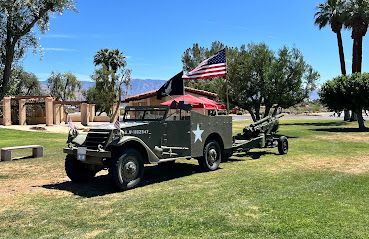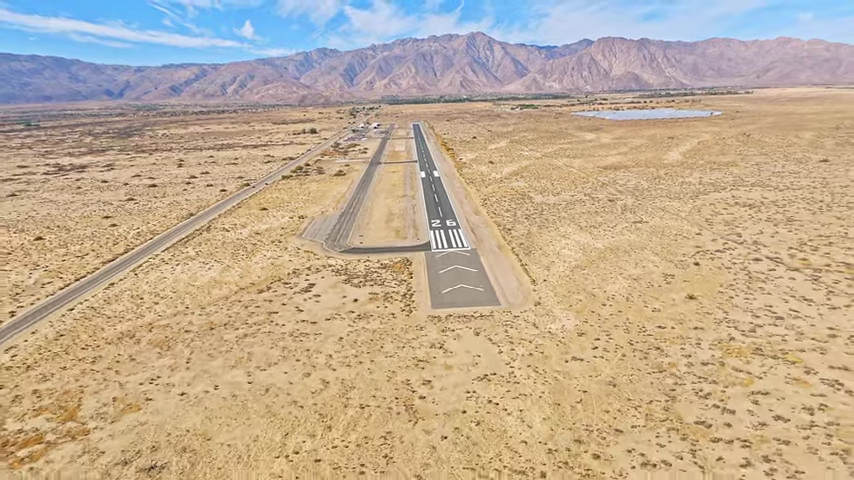Borrego Springs Military History
Share
Borrego Springs, once a bustling hub of military activity, now rests in serene quietude, a stark contrast to its past.

Feel Free to Download These Historical Military Files
BORREGO HOTEL TARGET AREA
BORREGO MANEUVER AREA
The Military History of Borrego Springs and Anza-Borrego
The Transformation of Borrego Springs: From Military Grounds to Serene Desert
Located in San Diego County, Borrego Springs and Anza-Borrego Desert State Park stand as tranquil reminders of a turbulent past. This region, characterized by hot summers, mild winters, and an average annual temperature of 72.6°F, was once a significant military area. Two crucial military sites, the Borrego Hotel site and the Borrego Maneuver Area, played pivotal roles during World War II.
The Borrego Hotel Site: A World War II Bombing Range
The Borrego Hotel site, a 160-acre parcel in the Borrego Valley, was once an emergency landing field and bombing range for the U.S. Navy. Acquired around 1941, it was active until 1955, playing a critical role in naval air training. Despite the desert's arid conditions, the site, also known as Target 63, hosted numerous military exercises, including high altitude bombing, dive bombing, and strafing. The facility construction included a dirt runway and bombing targets, yet the land has since returned to a state of untouched wilderness, bearing no trace of its past.
The Borrego Maneuver Area: Army Training Ground
Encompassing approximately 400 square miles, the Borrego Maneuver Area was obtained by the U.S. Army around 1942 for anti-aircraft training. This expansive area saw extensive military use, primarily for "dry run" and "live fire" training exercises by anti-aircraft units. Interestingly, the only significant Army improvement was the black-topping of Yaqui Pass Road.
The Aftermath: Return to Tranquility
Following the war, both sites were deemed excess to military needs and were eventually released to civilian ownership. Today, these lands are predominantly under the stewardship of the State of California, serving as state park land and preserving the natural beauty of the Borrego Valley.
Ecological and Geological Significance
The Anza-Borrego Desert, enveloping these historic sites, is a part of the Colorado Desert Biogeographical Province, offering a diverse landscape of sandstone, silt, jagged mountains, and narrow canyons. This region, bisected by the San Jacinto and Elsinore fault zones, presents a fascinating blend of geological features shaped over millions of years.
Reflecting on the Past, Embracing the Present
The transformation of Borrego Springs from a hub of military activity to a serene desert landscape is a tale of resilience and change. These sites, once alive with the sounds of military training, now offer peaceful retreats, inviting visitors to explore and appreciate the natural wonders of the Anza-Borrego Desert.
A Legacy Preserved
While the military past of Borrego Springs is a significant chapter in its history, the region today stands as a testament to the power of nature and the human spirit to adapt and evolve. It's a story worth telling, a history worth preserving, and a landscape worth exploring.
How a Calcite mine in the Anza-Borrego desert of California helped drop the atomic bombs of World War II.
This video is about two Training Areas in the Anza Borrego Desert State Park used for training pilots for bombing and staffing exercises. It explains the use of 4 Rake Stations built to track the accuracy of the pilots efforts to hit targets. The video also gives an overview of the Mobilization efforts starting in 1941.
This is the story of the Crash of a T-39 Sabreliner and the loss of 5 officers on April 1, 1977 in Anza Borrego Desert State Park.
Timeline: The Military History of Borrego Springs and Anza-Borrego
1940 - 1944: The War Years and Military Utilization
- 1940, September 7: The U.S. Navy begins the process of acquiring land for military purposes, following recommendations for advanced carrier training activities.
- 1941, July 10: The U.S. Navy acquires 160 acres of land in Borrego Valley, known as the Borrego Hotel site, through condemnation for use as an emergency landing field and bombing target.
- 1942, March 20: The U.S. Army obtains 400 square miles in the Borrego Desert for use as the Borrego Maneuver Area.
- 1943-1944: The Army Anti-Aircraft Training Center (AARTC) at Camp Callan uses the Borrego Maneuver Area for field training and anti-aircraft artillery firing.
- 1943, September: Camp Callan's Anti-Aircraft Replacement Training Center begins using the Borrego Maneuver Area for "dry run" and "live fire" training exercises.
1944 - 1956: Site Inactivation and Transition to Civilian Use
- 1944, May 29: Camp Callan declares the Borrego Maneuver Area as excess to its needs.
- 1944, July 13: The Borrego Maneuver Area is declared surplus by the Headquarters Army Ground Forces.
- 1944, August 26: The Borrego Maneuver Area is confirmed as vacated and will not be used again by the Army, with the site being policed for hazards.
- 1955, October 31: The Department of the Navy declares the Borrego Hotel site excess to its needs.
- 1956, January 25: The Borrego Hotel site is declared surplus and classified for agricultural use.
- 1956, July 23: The General Services Administration (GSA) offers the Borrego Hotel site for sale in a local newspaper.
- 1956, September 6: The Borrego Hotel site is sold to a private landowner by the GSA.
Post-1956: The Present Day
- The former Borrego Hotel site and the Borrego Maneuver Area have been predominantly under state, federal, and private ownership since their closure as military sites. The predominant portion of the land is now utilized by the State of California as part of Anza-Borrego Desert State Park.
This timeline encapsulates the key events in the military history of Borrego Springs and Anza-Borrego, highlighting their transformation from strategic military grounds to serene desert landscapes.













